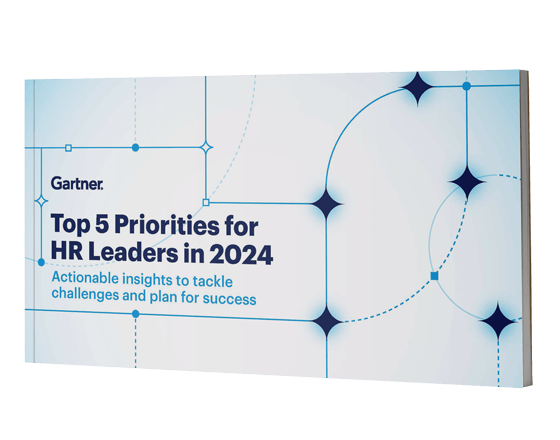Recruitment and Selection with The GC Index
Recruitment and selection has been carried out the same old way for years. CVs are treated like the be-all and end-all when it comes to getting selected, with recruitment decisions very often made based upon interview performance.
But something is wrong
For a long time, the industry has been challenged due to the placement of candidates in the wrong jobs. You can’t fit a square peg into a round hole, but this has been attempted many times. New research shows that 85% of HR decision makers know that they have hired badly in the past. This is proven by the fact that two out of five new hires just don’t cut it. Within 18 months, the error comes to the fore, the new recruit has gone and the recruitment cycle has to begin again.
This equates to 40% of new hires not working which is a very expensive mistake. Businesses of all shapes and sizes are losing out big time with the disruption caused being as costly as the expense involved. In fact, this is a huge problem affecting industries globally.
This is also bad news for recruitment agencies
More than 50% of HR decision makers feel that they will save money if they do the work themselves, with 42% being pretty sure that they have a far better understanding of what their business wants than any outsider. The strange thing is that although 47% of HR decision makers who have hired badly know that their recruitment processes need to be improved, there is no solution currently out there.
The recruitment agency knows that something needs to be done but has no idea what that might be. Marketing can be improved and customer service taken up a notch but what does this do to improve the quality of hires? The only real solution is to change the approach towards recruitment and selection. Going forward, it is only the recruiters that get their hiring right each and every time that will be successful. Clients need their help in a big way, knowing that when candidates are selected, they will be in it for the long haul. Only when this is possible will clients attain full value but this cannot possibly occur until the means by which candidates are assessed is changed.
Recruitment and selection the traditional way
The traditional way of evaluating candidates goes like this, following a 3-step process:
- Skills – having the ability to carry out the tasks required to carry out the role
- Experience – showing demonstrable experience of successfully delivering previously
- Cultural Fit – appearing to have the necessary personality, behaviour and values to fit in with the existing organizational culture
This is all well and good, but what about the 4th missing link – impact? What contribution does the new recruit expect to make upon the organisation and how does this compare to the company’s interpretation of the impact they want them to make? This is where The GC Index brings clarity of expectations in the recruitment process for the candidate and the employer of what impact is actually required to be successful in the role.
Recruitment and selection the GC Index way
Whilst there is nothing wrong with using these old traditional criteria, time has shown that they are just not enough when it comes to hiring wisely and for the long term. It is this 4th missing element of impact – that makes a world of difference. By looking at impact and the contribution that the candidate can make to the company, invaluable additional information can be taken into account when dealing with recruitment and selection. By bringing The GC Index® model into the equation, a much more holistic view of the candidate can be achieved.
The GC Index® model enables the candidate to be assessed with regard to the impact and contribution they will bring to the table. It is a simple yet powerful model that enables the whole process to be carried out far more efficiently, drastically mitigating the risk of a failed hire.
The birth of the GC Index
Several years ago, Nathan Ott co-founder of The GC Index® found that his company was having to deal with a mounting pile of clients all asking for the same thing; Game Changers. ‘Game Changers’ are those people that have that rare je ne sais quoi, that elusive charisma and spark that bring a whole new depth of creativity and invention to organisations – for conceptual clarity Game Changers have the propensity to change landscapes. The problem was, how could these individuals with game-changing characteristics be identified accurately and in such a way that the process would reveal them for who they were, each and every time? So large was the volume of requests flowing in that Nathan sought assistance, requisitioning an academic research project to be carried out on this very topic. The task was a simple one and yet difficult to put into practice; to find a reliable method of identifying, profiling and understanding game changers.
The research went one step further
Rather than purely classifying clear metrics that could be used to identify Game Changers, it revealed that very often these types of people require assistance from other individuals with complementary skills. This way, they are able to make the most of their natural talents and manifest their abilities to attain full impact. When working solo, Game Changers cannot always work their magic; ideally, they need the right mix of people around them to help complete the synthesis and bring their vision to life.
The research also revealed that each person has their own combination of proclivities which demarcate how this impact will be made. Within this team, whilst the Game Changers may come up with original ideas that is simply not enough to drive transformational change everyone has their own important part to play. To put it another way, whilst not everyone may have those essential skills to be a Game Changer, we need everyone working together to make a game-changing impact.
The research paper discovered that there are five main proclivities when it comes to the type of impact that a person will make within the environs of work. By recognising these proclivities, they can be channelled within all teams. The GC Index® model categorizes them like this:
- Have a great idea (The Game Changer)
- Make sense of it (The Strategist)
- Get it done (The Implementer)
- Make it brilliant (The Polisher)
- Work together to achieve it (The Play Maker)
The model separates those who make their impact through the use of ideas, those that do it via tasks and those who bring people together:
Ideas based
- Game Changer
- Strategist
Task based
- Polisher
- Implementer
Bring people together
- Play Maker
These proclivities, moreover inclinations to make an impact do not exist separately within each individual. Indeed, each person may have a mix of them, resulting in a variety of tangible leadership styles.
Candidate selection is transformed
The results of this research are not only incredibly powerful and simple to understand but can be put into play when carrying out the process of recruitment and candidate selection. The GC Index® adds to the vital framework that is required to be set in motion when hiring. Recruiters can immediately see both the impact and the contribution that each candidate will give when placed within a certain role, once they have been evaluated using The GC Index® model.
Unlike the traditional recruitment and selection method, which has shown itself to produce disappointingly poor results over and over again, when The GC Index® model is set in motion, candidate selection is transformed. The result? Recruits that want to stay and companies that won’t let them go.
This is good news for everyone and something that recruitment agencies the world over will want to find out more about. After all, it is those recruiters that get it right every time that will stand out from the competition.



